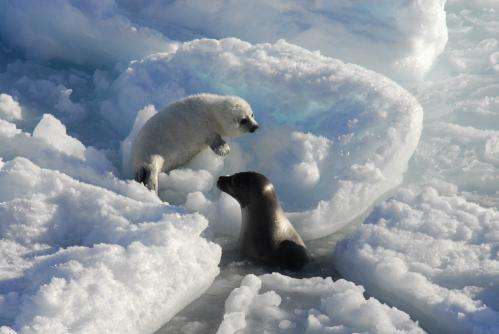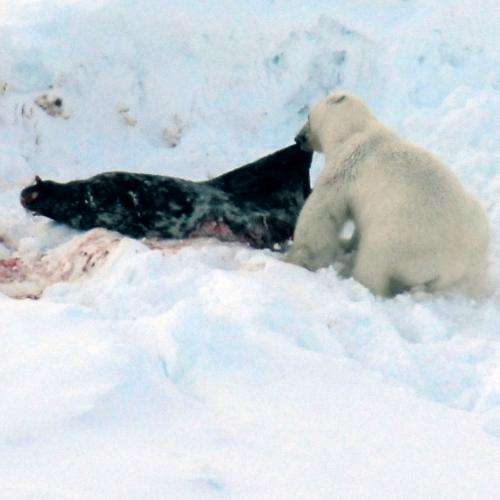Climate change: Polar bears change to diet with higher contaminant loads

Researchers expect the climate to become warmer in the future and predict that climate change will have a significant impact on the Arctic. How will a warming Arctic affect the polar bears?
The East Greenlandic population of polar bears resides in an area, where the Arctic sea ice is expected to disappear very late. However, the decline in the ice sheet here occurs at a rate of almost 1% per year, one of the highest rates measured in the entire Arctic region.
How does this affect the prey of the polar bears - and, in turn, the polar bears' intake of contaminants? An international team of researchers set out to explore this question. The team counted researchers from the Greenland Institute of Natural Resources, Aarhus University (Denmark) and a number of Canadian institutions including: Dalhousie University, Great Lakes Institute for Environmental Research, University of Windsor, Carleton University and the National Water Research Institute.
The researchers studied the fatty acid profiles in the adipose tissue from a unique material of 310 polar bears hunted by East Greenland Inuits from the Scoresbysund area in the years from 1984 to 2011. The composition of fatty acids in the fat tissue of the polar bears namely reflects the profile of fatty acids in their diet.
The results show that the polar bears primarily feed on three species of seals: the high Arctic ringed seal and the two sub-Arctic species harp seal and hooded seal. Moreover, the results showed that the diet of the polar bears had changed over the almost 30 years during which the samples were collected. In this period, the average relative decline in the ringed seal's significance for the polar bears diet was 42%. Similarly, the intake of the sub-Arctic seals increased during the same period. Also, the researchers found that polar bears are generally in better condition now, so at a first glance the polar bears should be happy with this development.

Climate change undermines improvements
There are, however, a couple of problems that might mar the happiness, explains Professor Rune Dietz, Aarhus University:
"The problem is that the sub-Arctic seals that the polar bear has switched to, have a higher content of contaminants because they live closer to the industrialised world and are higher up in the food chain. Therefore, climate change undermines the improvements that you would otherwise have obtained owing to international regulations in the use of environmental use of persisten organic pollutants (POPs). We can see that the content of the POPs after year 2000 decreases slower in the polar bear than in, the ringed seal."
In the long term, the polar bear may very well loose access to the sub-Arctic seals as these depend on packed ice where they give birth to their cubs and are exposed to sunlight allowing them to form vital vitamin D.
More information: Causes and consequences of long-term change in East Greenland polar bears' diets: Investigation using quantitative fatty acid estimates and fatty acid carbon isotope patterns. McKinney, M. et al. (2013). Global Change Biology 19: 2360-2372. DOI: 10.1111/gcb.12241
Part 1: Three decades (1984-2010) of legacy contaminant trends in East Greenland polar bears (Ursus maritimus). Dietz R. et al. (2013a). Environment International 59:485-493. dx.doi.org/10.1016/j.envint.2012.09.004
Part 2: Three decades (1984-2010) of flame retardant trends in East Greenland polar bears (Ursus maritimus). Dietz R. et al. (2013b). Environment International 59: 494-500. dx.doi.org/10.1016/j.envint.2012.09.008
Journal information: Global Change Biology , Environment International
Provided by Aarhus University


















